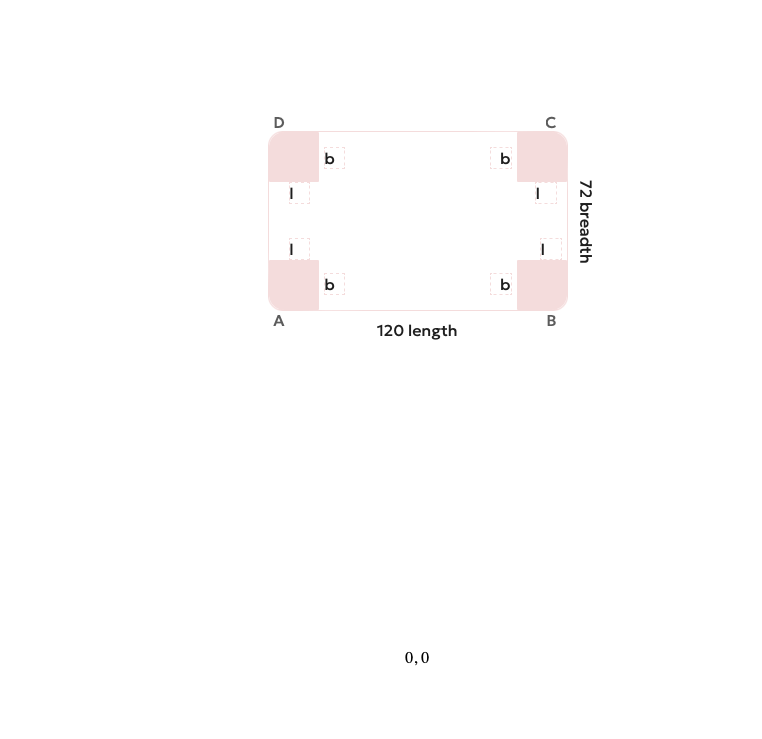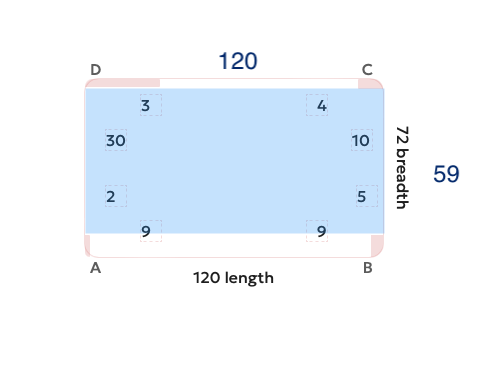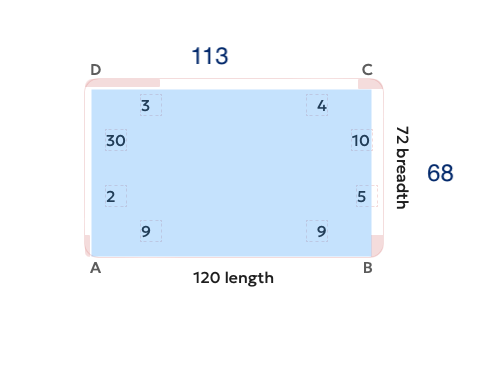So we have a rectangle with, let’s say dimensions of 120ft length, 72ft breadth and 20mm thickness (we assume thickness is negligible thus consider this cuboid a 2D rectangle). I want to use JavaScript to make a function, such that if any rectangular regions are cut from the corners of this rectangle, I can still find the largest chunk possible.
Here’s my approach but it’s wrong
class Rectangle {
length: number;
breadth: number;
thickness: number;
area: number;
constructor(length: number, breadth: number, thickness: number) {
this.length = length;
this.breadth = breadth;
this.thickness = thickness;
this.area = length * breadth;
}
}
const calculateUsableDimensions = (
deductions: IDefectWidgetContent['deductions'],
defaultDimensions: IDefectWidgetContent['defaultDimensions']
): Rectangle => {
const { length: defaultLength, breadth: defaultBreadth, thickness } = defaultDimensions;
deductions.sort(
(a, b) => Number(b.length) * Number(b.breadth) - Number(a.length) * Number(a.breadth)
);
let lengthSide = 0;
let breadthSide = 0;
for (const deduction of deductions) {
const { corner, length: deductionLength, breadth: deductionBreadth, thickness } = deduction;
if (corner === 'A' || corner === 'B') {
lengthSide += Number(deductionLength);
} else {
breadthSide += Number(deductionBreadth);
}
}
const remainingLength = Number(defaultLength) - lengthSide;
const remainingBreadth = Number(defaultBreadth) - breadthSide;
return new Rectangle(remainingLength, remainingBreadth, 20); // Thickness is set to 20
};
Here is the playground for this Playground | StoneTEKK Defects Visualizer
This is what a data of dimensions and deductions looks like
deductions: [
{ corner: 'A', length: 'l', breadth: 'b', thickness: '20' },
{ corner: 'B', length: 'l', breadth: 'b', thickness: '20' },
{ corner: 'C', length: 'l', breadth: 'b', thickness: '20' },
{ corner: 'D', length: 'l', breadth: 'b', thickness: '20' }
],
defaultDimensions: { length: '120', breadth: '72', thickness: '20' },
Assume all datatypes in int/Number. Also the visualizer gives accurate representation of the cut-outs. Only it does not calculate the cut-outs correctly and fail to subtract the deductions in a way it can take care of overlaps, and making the available biggest rectangle.
Update
Let’s take a look at this example
Because of these cuts, we will need to make the largest possible rectangle, and it will be smaller rectangle than 120 * 72,
Now if applying brute force, multiple rectangles are possible, I will showcase 2.
Their areas are 7080 sqft and 7684 sqft. So answer is to return
{ length : 113, breadth: 68, thickness: 20}
Remember thickness will always remain 20 as we assume for 2D while solving this.








2
Answers
The way I see it, there are 4 candidates. For each edge minus its corners, i.e. the middle section, slide straight to the opposite side until you hit a wall.
Do it for all edges and find the biggest area.
What if the rectangle is angled? I’m still working on a proof. I might be wrong.
Assuming there are two possible rectangles to cutout (horizontal or vertical) and you want to find out the biggest possible.
Here is some pseudocode that should calculate the size of the vertical rectangle correctly (i use slightly different structure of deductions so you dont have to iterate it and easier readability, should be easy to transform into that):
You would have to calculate the horizontal rectangle the same way and then compare
Update: i made a codesnippet analogue to IT goldmans answer, i get different result, which ones are correct might depend on what your desired result is…